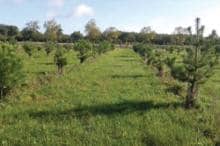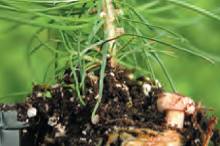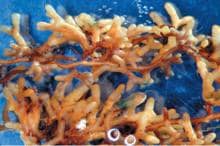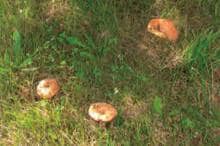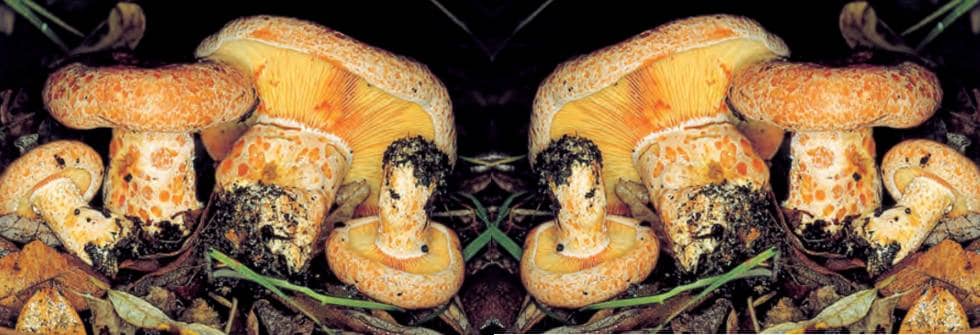
Where and how to produce mushrooms ?
Under the trees grow boletus and milk caps
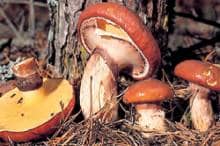 For several years, orchards a little bit particular have been multiplying everywhere in France: they do not grow fruits but mushrooms! It must be said that the establishment of such mushroom orchards has been democratized since the development and marketing of controlled mycorrhizal trees under which grow yellow boletes, delicious milkshakes or even milk caps.
For several years, orchards a little bit particular have been multiplying everywhere in France: they do not grow fruits but mushrooms! It must be said that the establishment of such mushroom orchards has been democratized since the development and marketing of controlled mycorrhizal trees under which grow yellow boletes, delicious milkshakes or even milk caps.
This technique, developed jointly by Robin Nurseries and the INRAE (National Research Institute for Agriculture and the Environment), consists of pre-seeding young tree seedlings (in this case, pines) with the mycelium of yellow boletes and milkweeds. Why? Because the boletus, as well as the milkcap or the porcini, are fungi that live in symbiosis with the roots of trees: the mycelial filaments of the fungi bring mineral salts to the trees, which provide the organic matter necessary for the growth of milkcaps or other boletus.
The result of this pre-seeding (also called mycorrhization) is young pine trees (Austrian black pine, Scots pine, umbrella pine or maritime pine) that are able to promote and accelerate the appearance and growth of fungi near their trunks. Just as we plant an apple tree to harvest apples, we can now plant a pine tree to harvest boletus or milk caps!
The secret of good production: Opt for high quality mushroom trees
Mushroom growers and mushroom farmers know this perfectly well: The cultivation of edible mushrooms requires rigorously selected host plants. This is why ROBIN MUSHROOM PLANTS® are produced in our own nursery, using techniques developed within the framework of our quality organization system and under license from INRAE (Institut National de Recherche pour l'Agriculture et l'Environnement). The mycorrhization of our MUSHROOM PLANTS is thus controlled and certified by INRAE. It is only after this chain of control that our plants are labeled, numbered, vintage and delivered. The rigor of these controls, allows us to guarantee to our customers :
- a guaranteed and certified mycorrhization with different species of selected mushrooms,
- a high level of mycorrhization,
- a purity of mycorrhization: no contaminants on the root system, which could compete or hinder the development of fungi.
We can guarantee that with ROBIN MUSHROOM PLANTS, you have all the assets to succeed in your mushroom culture.
In order to meet the varied requirements of our customers, we offer a complete range of mushroom trees with controlled mycorrhization of different edible mushrooms on different species of pine (Pinus): Austrian black pine, Scots pine, umbrella pine and maritime pine. With PLANTS CHAMPIGNON® ROBIN, you will be able to cultivate the following mushrooms :
Cultivation of saffron milk caps thanks to mycorrhizal pines
The delicious milk cap (Lactarius deliciosus) is an edible mushroom of the russulaceae family. Although not as tasty as the bloody milkcap, it is nevertheless particularly appreciated in the South-East of France and very much used in Provencal gastronomy (where it is sometimes called "barigoule", "safrané" or "catalan"). It grows in coniferous woods and more specifically at the foot of pine trees. It is harvested in September-October, at a still young stage, when its cap and its lamellae are still oriented downwards and its flesh is firm and fleshy.
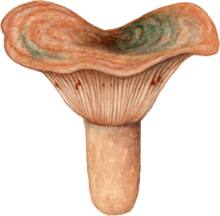
Cultivation of bloody milk-caps from mycorrhized pine trees
The bloody milkcap (Lactarius sanguifluus) is also a member of the russulaceous mushroom family. Recognizable by its orange to reddish-brown cap, its pinkish lamellae and the red latex that is released when cut, the bloody milfoil is picked from late summer to late fall. It sometimes grows in isolation, but most often in groups under conifers (mainly pines). More flavorful than the delicious milkcap, it is cooked marinated or stewed.
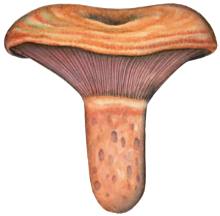
Production of yellow boletes from mycorrhized pine trees
Mushroom of the boletaceae family, the yellow boletus (Suillus luteus) grows most often in groups of a few individuals scattered under pine forests in the plains and mountains. It can be recognized by its pale yellow, odorless, rather soft and spongy flesh in its cap. It does not present neither ring nor lamellae, on the other hand the lower face of its hat is truffled of pores. It is harvested from early summer to late fall.
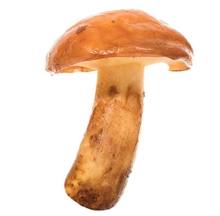
ROBIN MUSHROOM PLANTS® are available in ROBIN ANTI-CHIGNON cups in 2 different sizes: GR 430 cm3 and GR 600 cm3. These patented cups allow an optimal root development with a very abundant hair and without malformation thanks to the integral self-coring process. This is very important for the good growth of MUSHROOM PLANTS® and mycorrhizae.
When mushroom picking becomes a real harvest
Growing edible mushrooms in an orchard can be a profitable, sustainable and environmentally friendly investment. Indeed, milk caps and boletus can be grown on young trees (unlike the porcini, which generally grows on trees that are several decades old). Thus, the production of mushrooms in the orchard can start only 3 to 4 years after the planting of the mycorrhized pines.
In terms of yield, expect an average mushroom production of about :
- 400 gr per plant for milkcap (i.e. between 170 to 450 kg per hectare per year, depending on the planting density)
- 1.7 to 3 kg per plant for yellow boletus (i.e. 1 to 3 tons per hectare per year, depending on planting density)
Given these yields, you can understand why we no longer speak of picking, but of harvesting mushrooms !
Mushroom growing and harvesting in pictures...
The pleasure and satisfaction of seeing your mushroom orchard produce beautiful boletus or milk caps...
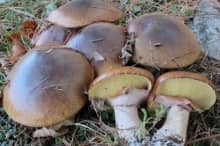
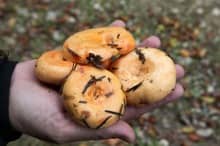
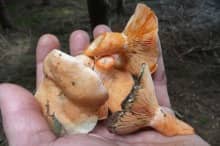
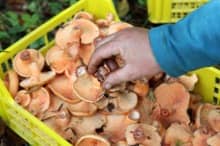
(Click on the pictures to zoom in)
Questions and answers about mushroom cultivation
The boletus season begins after the first heavy summer rains and continues until November. They are usually found in softwood forests. The boletus likes sandy and calcareous soils and likes airy places, such as forest edges, clearings and roadsides. This mycorrhizal species lives in symbiosis with tree roots, which is why it is often found in the immediate vicinity of pine trees.
Milkcaps (whether blood or saffron) grow mainly in coniferous forests (pine, fir or spruce woods). They are collected from the end of summer to the beginning of winter, rarely above 1500 meters of altitude, on calcareous soils.
Controlled mycorrhization for myciculture is mostly done on pine trees. It is therefore possible to cultivate cowries or mildews from Scots pine, umbrella pine, maritime pine or even Austrian black pine.
The price of a mycorrhized mushroom plant is about 21 € per unit. This price may vary slightly depending on the host species of the chosen plant (Scots pine, maritime pine...) and the volume of its container. Note that these prices are decreasing according to the number of plants ordered.
A mushroom tree starts producing 3 or 4 years after its planting. Depending on the species, the planting density and the care given to the orchard, the production can reach 3 kilos of mushrooms per plant (up to 3 tons per hectare per year).
It is only 3 or 4 years after planting that your mushroom trees will produce their first milk caps or yellow boletes. From then on, they will provide you with one harvest per year.
Mushroom plants can be found in specialized nurseries such as ROBIN Nurseries. If you live near our sales points (department of 04 and 05), do not hesitate to visit us, you will benefit from precious advices before launching you. Otherwise, you can buy your mushroom plants directly online, via this website. They will be delivered at home !
